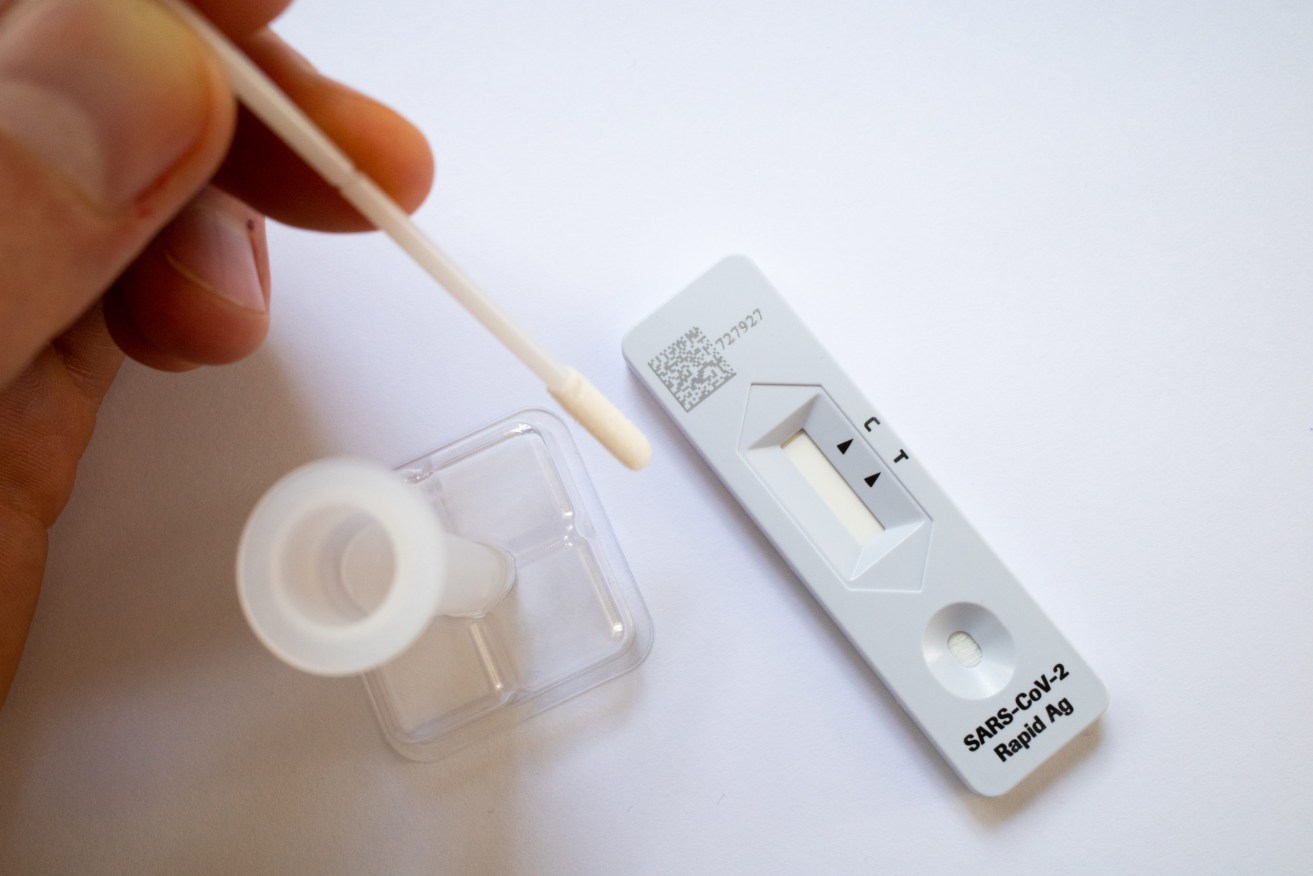Christmas COVID peak for SA under latest modelling
South Australia’s next wave of COVID-19 will see daily infections reach up to eight thousand by early December with hospitalisations to peak just before Christmas, a COVID modeller for the state government has told parliament.


A rapid antigen test. Photo: AAP/Lukas Coch
Speaking before a parliamentary committee this morning, University of Adelaide Professor Joshua Ross said his latest modelling predicts the state’s next wave will reach “peak infections” on December 6 followed by a peak in hospitalisations on December 20.
One of two researchers providing COVID-19 modelling to the state government, Ross said the model forecasts daily infections peaking at six to eight thousand a day – although he expected only 20 per cent of cases to be detected due to reduced testing numbers.
The model predicts COVID ward occupancy to reach a high of 200, Ross said, which would be below the peak of South Australia’s three previous COVID-19 waves.
On Friday, SA Health reported there were 45 people in hospital with COVID-19.
Ross said he provided an update to chief public health officer Nicola Spurrier in the “early hours of this morning” about the latest modelling ahead of an Emergency Management Council (EMC) meeting this week.
Asked by Opposition health spokesperson Ashton Hurn if hospitalisations would peak around Christmas time, Ross said: “That’s what the current modelling would suggest is going to be the case.”
“The peak date… in terms of infections or cases looks like in the early December, sixth of December say, but none of this is accurate to that level of precision,” he said.
“Then obviously the hospitalisations normally lag about two weeks, so around about the 20th of December or something like that. This is probably all before our government has currently seen this… but it’s somewhere probably six to eight thousand was the peak infections.
“The hospitalisations I can’t remember off the top of my head but.. it was maybe around 200 or something total COVID occupancy. So it’s less than anything we’ve experienced before in terms of a peak of the other waves, but it’s still significant.”
Ross said the model runs through to February and takes into account national cabinet’s decision to scrap mandatory five-day isolation for people who test positive to COVID-19.
The stay-at-home orders will end on Friday, October 14.
Ross said keeping isolation requirements in place only reduced transmission by around three per cent because “a lot of transmission actually takes place prior to symptom onset”.
The December peak forecast is slightly later than earlier modelling provided to the EMC, which predicted a November peak.
Ross said this is because the model is updated regularly and attempts to account for the impact of new variants.
“There’s lots of uncertainty about what’s going to happen with variants,” Ross said, noting the emergence of the new BA.2.75 variant.
“I’m trying to do my best to account for what I think they will do.
“The uncertainty reduces as we get closer and closer, so I think at least two or three weeks before the actual peak’s going to happen, we should be able to provide much more certainty about when it will happen.”
Earlier, Ross said he was optimistic that continued vaccine uptake and “hybrid immunity” – being vaccinated and previously infected with COVID-19 – would mean South Australia’s next COVID-19 wave will be less severe than those previous.
“I think it’s most likely we will experience another wave of infection later this year, mostly as a consequence of waning immunity rather than a new variant causing that,” he said.
“With maintenance of adequate vaccine uptake and hybrid immunity… it’s reasonable to believe that SA is past the worst in terms of the demand on hospitals… I think it is reasonable to have that hope and expectation.
“However, it is possible that a new variant will emerge which significantly escapes immunity and so I think we just need to remain vigilant and consider that we may need to put some other measures back in place if the wave looks like it’s going to be particularly bad.”
He said the state government’s “main focus” should be on “ensuring the quick administrating of antivirals to those that are eligible” as well as continued messaging on vaccines.
South Australia passed 1000 COVID deaths on Friday after 84 previously unknown deaths, which occurred between May 30 and September 14 this year, were added to the pandemic death toll.
SA Health was also notified of a further nine deaths last week, taking the total number of people to pass away with COVID-19 in South Australia to 1027.
SA Health reported 2720 cases for last week, averaging 388 a day.




